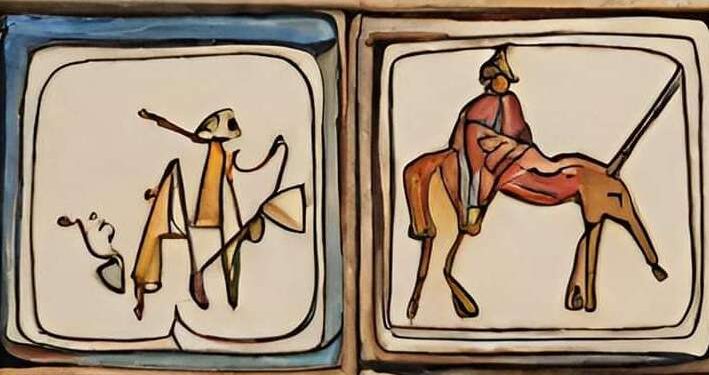An invitation to spend two Sundays with Don Quixote by creating artistic works. A must for children and teens.
The Cervantes Institute and the National Center for Ceramics have just taken a good initiative around the most emblematic character of Spanish literature.
For two successive Sundays, Don Quixote will be in the spotlight and should bring together young and old around literature, drawing and art ceramics. A joint initiative of the Institut Cervantes and the National Center of Ceramics is in fact to make Don Quixote, his Rossinante and his faithful Sancho Pança revived.
Sunday 19 then Sunday, November 26, the public will thus be an appointment with artistic creation and Quixottesque inspirations.
With this initiative, it is the playful and festive dimension that is in the spotlight. The first day of workshop at the Institut Cervantes, will start with a reading of tales, hosted by Youssef Bakluti. This service will be followed by a projection of cartoons. Then, a drawing workshop during which each participant will create a work inspired by Don Quixote, will be led by Mohamed Hachicha.
The following week, Sunday, November 26, it will be the turn of the National Center for the Art Ceramics of Sidi Kacem El-Jelizi to welcome the participants. A ceramic workshop with modeling exercises will initiate the work and will be followed by the creation of a composition with tiles, using the drawings made during the first session on Don Quixote.
It should be mentioned that all the necessary materials will be provided by the organization and that each participant will leave with his work of art in memory of this creative adventure. The registration fees amount to 30 dinars while the workshops are primarily intended for children.
It is undoubtedly a promising initiative that deserves to be systematized as it allows a harmonious initiation to art and literature while opening up prospects on a major work of world literature. In addition, this artistic project could take another scale in the event that a wall fresco see the light of day to greet both Cervantes and Don Quixote.
The national ceramic center would lend itself all the more since the place that welcomes it constitutes one of the symbols of Tunisian-Spanish history. This mausoleum of Sidi Kacem El-Jelizi is indeed an element of the Andalusian memory of Tunis and also the base of the tradition of varnished pottery. An initiative to follow and support.








